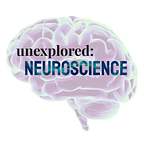How do the neural correlates differ in parasomnia and wakeful movement?
This project features a new research question that can potentially address the gap in our understanding of parasomnia and a research project that can test the treatments for this condition.
Parasomnias are defined as a group of sleep disorders which involve abnormal movements and behaviors, such as sleep walking. Parasomnia can cause anxiety and distress about falling asleep, which is a normal activity. According to Lopez et al. (2013), “adult sleepwalking is a potentially serious condition that may induce violent behaviors, self-injury or injury to others, sleep disruption, excessive daytime sleepiness, fatigue, and psychological distress.”
The proposed research question is:
How do the neural correlates in the brain differ in parasomnia and wakeful movement? Can we use this information to create a cure for sleepwalking?
This research question is important and valuable because it can further our understanding into the neural correlates of parasomnia and potentially provide a cure for this condition.
My Research Proposal
Understanding the differences in neural correlates
Here is how I propose to answer this research question: Firstly, 40 subjects that suffer from parasomnia and sleep walking in particular will be recruited for the study. A questionnaire using the Likert scale will be conducted to find out how this condition affects their daily life and the severity of it. After, a mobile EEG will be used to record neural activity while they are performing an everyday task, such as walking to and using the bathroom. Subjects will then be prepped to use the mobile EEG and their neural activity during REM and NREM sleep will be recorded. Their neural activity will be monitored and observed for abnormal activity for 4 sessions.
This data will be used to map the similarities and differences in neural correlates in sleep and wakeful movements. This will allow us to understand the differences between the neural correlates involved during both conditions. This information can be used to propose a cure to wake the brain into full consciousness when parasomnia episodes occur.
Possible solutions to parasomnia
Solutions to parasomnia can be provided in the form of medication or trained stimulation by TMS to wake parts of the brain during parasomnia episodes. To investigate the efficacy of these solutions, another experiment similar to the first one will be conducted before and after 1 year of medication or 10 sessions of trained stimulation by TMS. After one year of medication or 10 sessions of TMS, we will monitor abnormal activity during REM and NREM sleep and record their brain activity to compare it to the activity recorded before the experiment to measure the success of the treatment. A survey to investigate the quality of sleep and life will also be conducted to compare the conditions before and after treatment.
Future questions to consider
One question to our solution that has not been answered yet is: What are the difficulties in creating a medication that will wake the right parts of the brain during parasomnia episodes, without affecting the parts of the brain that aren’t involved in parasomnia? How can we ensure that the medication will not increase abnormal activity during sleep?
This series features Research Ideation projects created by members of the Unexplored Neuroscience community, with the goal of exploring new research ideas within different branches of Neuroscience.
This project was created by Rasheena J. Wright in response to the Unexplored Neuroscience project prompt on a recent discovery in 2020 on the causal role of the sensorimotor cortex in generating movement during REM sleep, during our month of exploring Cognitive Neuroscience.
Rasheena has her Bachelors degree in Biochemistry and is a beginner to the neuroscience community. She plans on attending medical school and becoming an OB/GYN physician. She is excited to explore the unexplored side of neuroscience.
Feedback
Please share your thoughts and critique on the research question and proposal. Feel free to send Rasheena any links that pertain to this topic and new research papers on parasomnia! You can contact Rasheena here at rwright1993@gmail.com.
